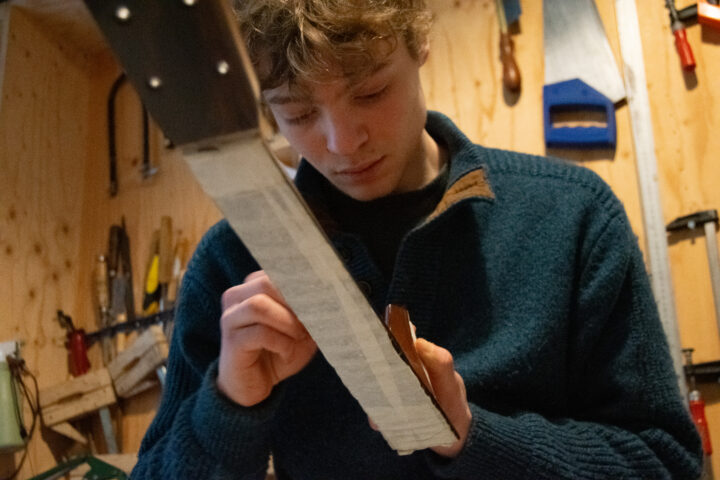“But,” I think, “How will I ever go back? Back to playing a guitar whose neck I didn’t hand carve for my own fretting hand?”
I’m midway through day five of a guitar building workshop with Jay Lichty. Each day has brought new challenges, insights into the techniques of guitar making, practice in problem solving, and, more than anything, being immersed in the intersection of art and craft. Jay has proven to be the perfect mentor, foil, and partner in artistry and philosophy.
Although each day has offered powerful moments of personal meaning, today’s agenda promises two encounters with soul of that thing called a one-on-one guitar making workshop: inlaying my own pearl logo in the headstock and carving a neck for my own guitar. Inlaying the “T” for Thomas is first. Jay hands me a tiny, pearl “T” and a pencil. “Place this where you want it and trace around it.” OK, not so hard. Then, he hands me a jeweler’s magnifying headset and a router with a very tiny bit. “OK, now rout the shape, staying inside your pencil line.” Jay looks at me and adds, probably because he thinks he should, even though he knows what my answer will be, “Unless you want me to do it for you.” By way of answer, I pull down the headset, take a deep breath, and plunge that router bit into the lovely koa overly I yesterday glued to the headstock. After a couple of trial fittings and a bit of extra routing, I pop the letter on the headstock slide it to the designated spot, and fits the space, well, to a T (Sorry!). The whole process takes only around ten minutes. I never knew that I could hold my breath for that long!
I remove the letter, fill the routed cavity with some epoxy, plop it back in, smear the epoxy around to make certain that is secures the “T,” and learn that we’ll sand that down in a couple of hours to reveal just how good, or bad, a job I’ve done with my first inlay.
At this point I am convinced that seeing my inlay of my initial on the guitar’s headstock will stand as the single most powerful moment of this extraordinary experience. But, I shortly see that my suspicion is completely wrong. When I remove the neck from the vice and flip it over at Jay’s instruction, re-secure it and Jay hands me a spokeshave, I swear that I feel electricity surge through my body and to my outstretched hands. This, I immediately know, is the moment.
A guitar player develops a personal relationship with a guitar’s neck. If you play long enough and play enough different guitars, you’ll develop preferences for width and depth of the neck and the profile, or shape of the neck. Imagine the neck cut through vertically parallel to one of the frets. The resulting cross section is that profile. Some players like a “V” shape to the profile, others prefer a “U” or “C.” I’ve played hundreds if not thousands of guitars. I’ve had guitars custom built for me and have provided the luthiers with detailed descriptions of what neck profile I wish. But, now, for the first time, I get to carve the neck to fit my own hand.
It’s the sort of moment that most players would savor. But, not I. I attack the rough-hewn neck as if hesitation might result in a lost opportunity. I carve, examine, carve, examine, sand, feel the neck, sand, fell the neck, and repeat. My creation starts to reveal itself. I’ve already set, with Jay’s assistance, the width at the nut (1 and 13/16″ for you fellow geeks) and string spacing at the bridge (2 and 5/16″). I want a very shallow C profile, little “shoulder” at the fingerboard, and almost uniform thickness its entire length, until necessarily I must as artfully as possible blend that profile into the neck heel that attaches my sculpture to the guitar body.
I work continuously without break, for about two hours. I graduate from spokeshave to rasp, to increasingly fine sandpaper. And here I am, holding the perfect neck for my fretting hand. It’s an immensely moving moment. One I’ll never forget.
Later in the day I encounter the most poignant moment of the build so far. After having completed the neck, my next task is to sculpt the bridge. I innocently pick up the raw piece of ebony that I’m about to fashion into a little sculpture that will affix strings to the guitar top and I stop for a heartbeat and recall a wonderful woman I met a couple of years ago who came to play a substantial role in a project that changed my life. In an investigation that yielded my book, Kalamazoo Gals, I discovered that the bridges on WWII-era Gibson guitars had long been recognized as the most finely sculpted in Gibson’s history. When I discovered that the company had covered up that women had built those WWII guitars and tracked down and interviewed a dozen of those female luthiers, one revealed to me that she made all of those bridges. She recalled, “You know, one thing I loved doing was carving those bridges. I loved the way the wood felt, the way it smelled, and how good it felt to make them look really nice.” So, I focus on channeling Maryjane, who died about a year ago, while sculpting my bridge. It’s yet another moving experience in five extraordinary days filled with many such moments. My homage to a great woman.
We end our work by temporarily gluing the bridge to the guitar (it will have to come off for the application of the finish) and prepare to call it a day. But, I need to glance at that “T,” touch my modest tribute to Maryjane one more time, and cradle that neck in my hand before turning out the lights.
All photos by Corrie Woods.
Next stop: Finale.
………
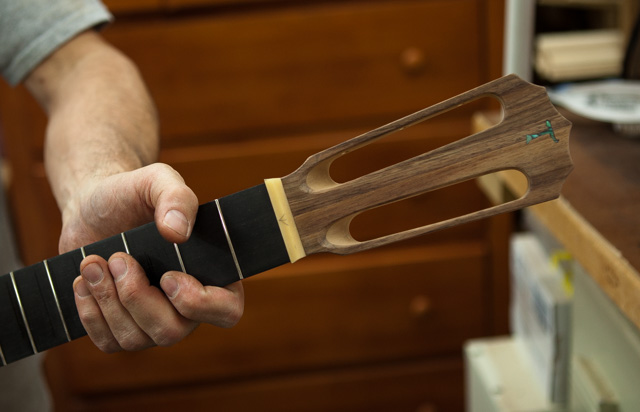
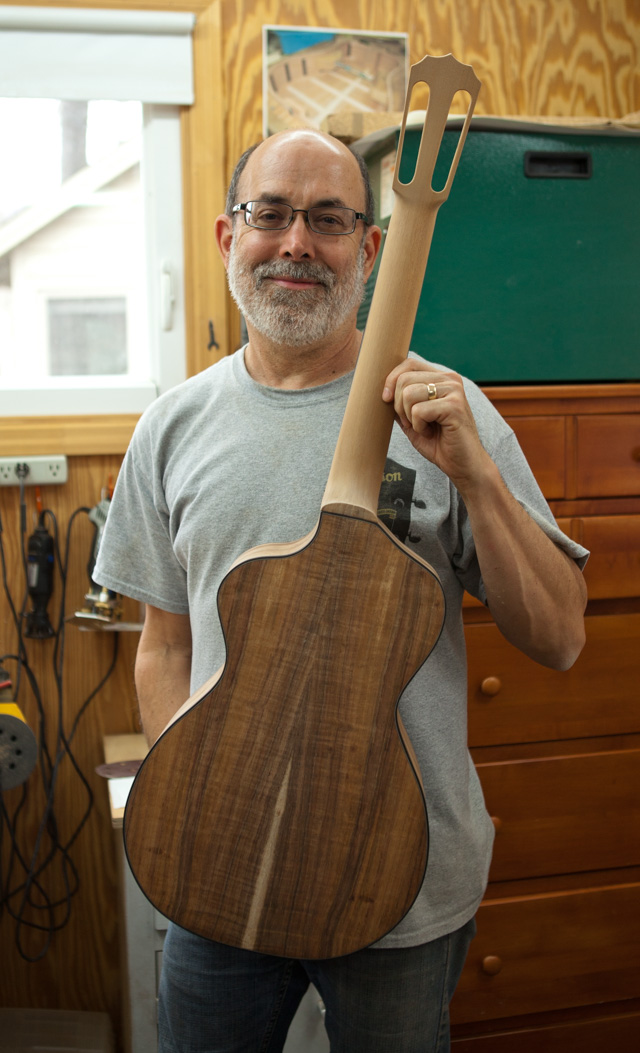
Backside of my guitar
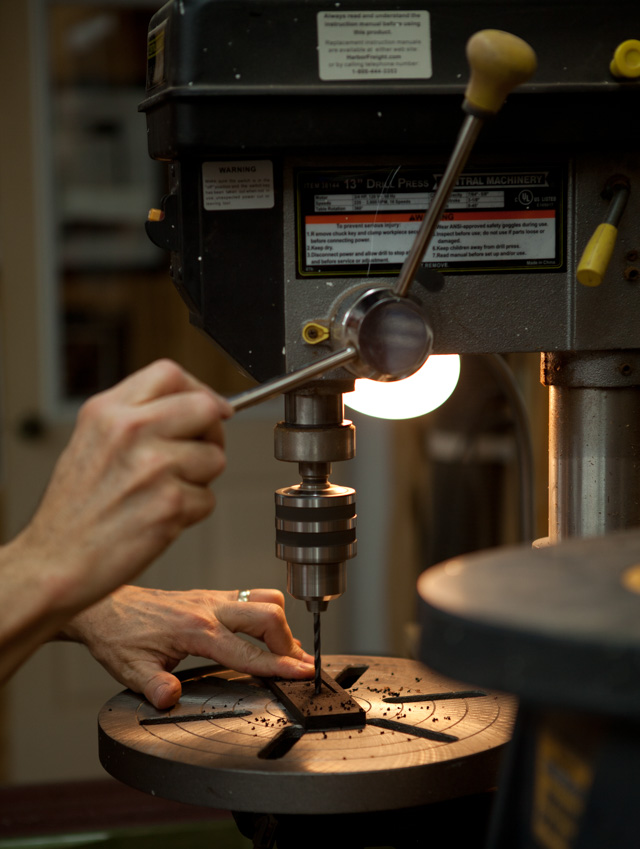
Drilling bridge pin holes
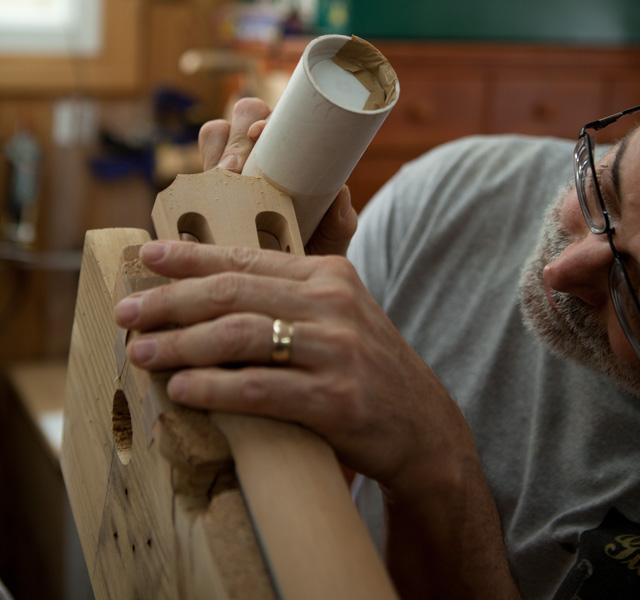
Fine Sanding the headstock shape
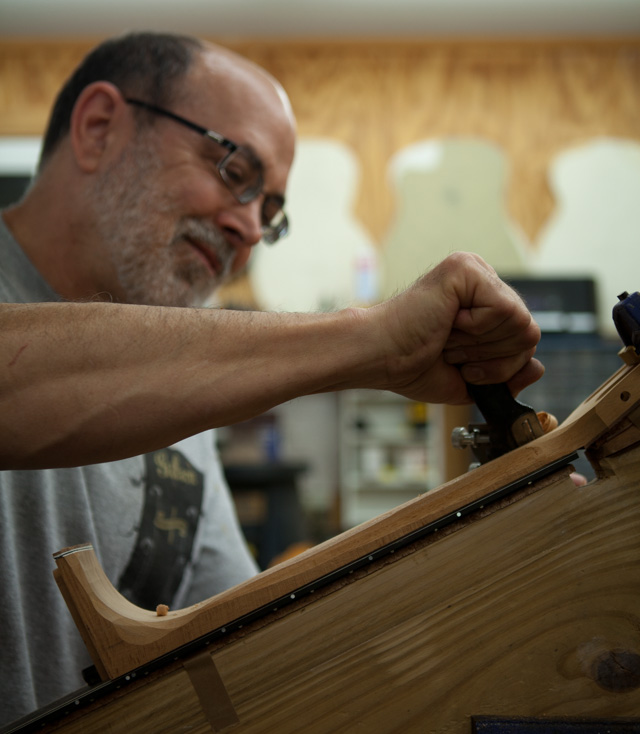
Getting closer to a carved neck
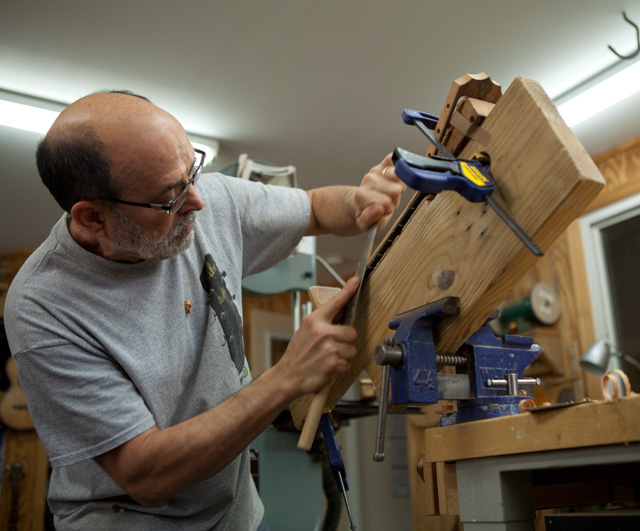
Getting even closer to a carved neck
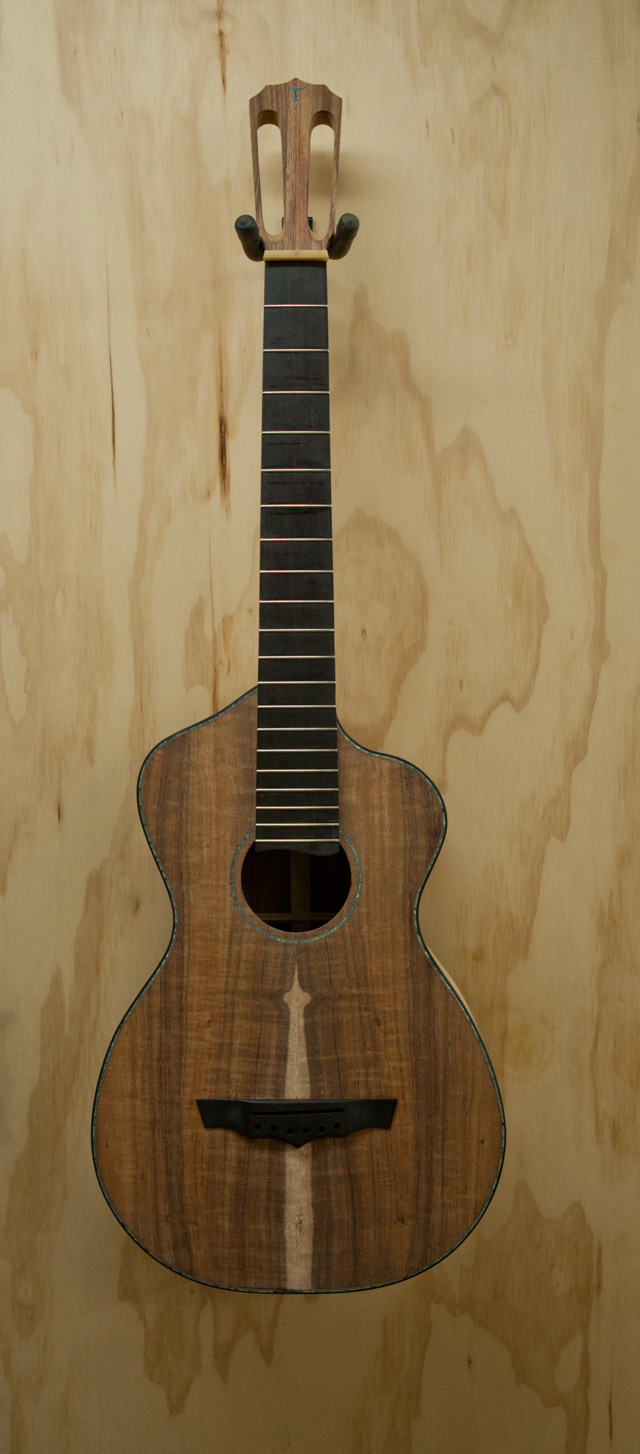
Guitar with bridge temporarily glued so that we can string it up tomorrow
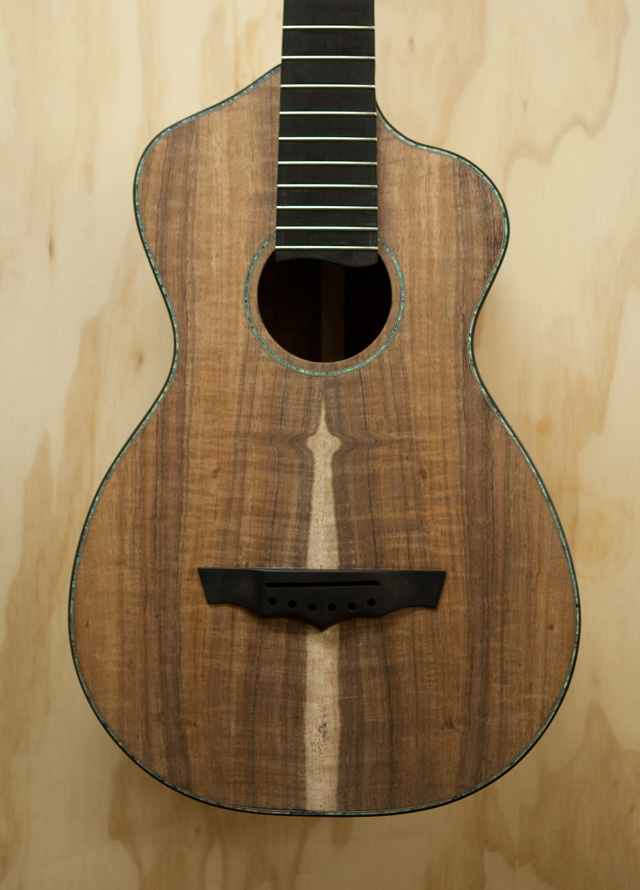
Guitar with bridge temporarily glued
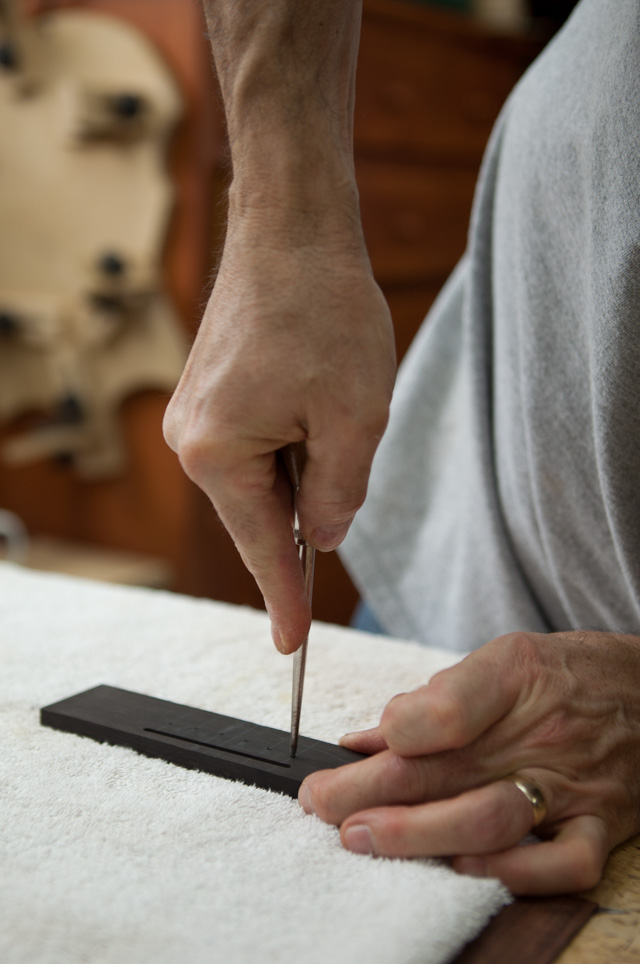
Marking bridge pin holes
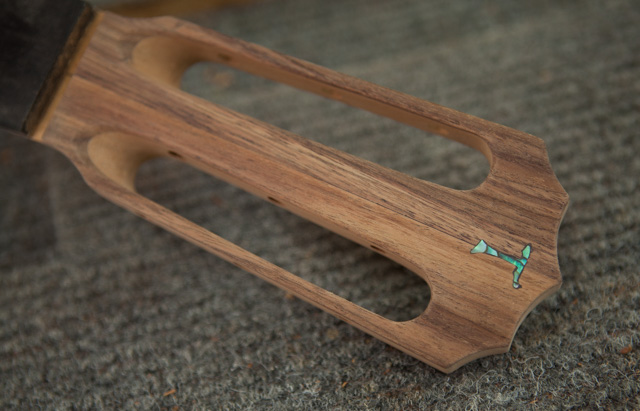
My First Inlay
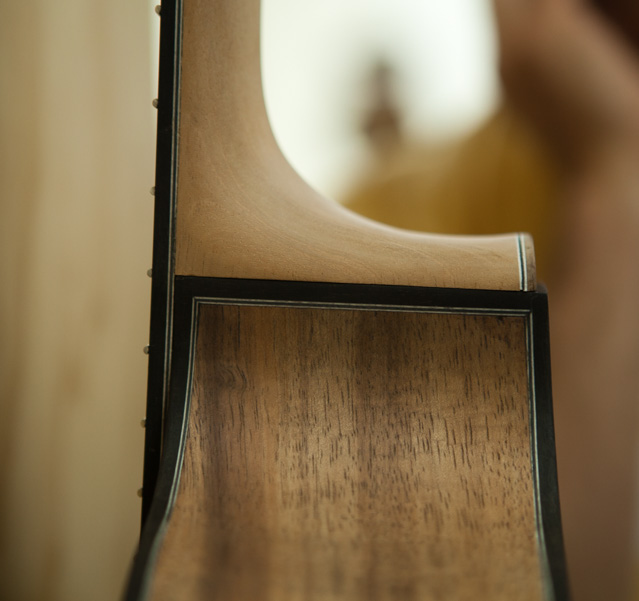
Neck joint
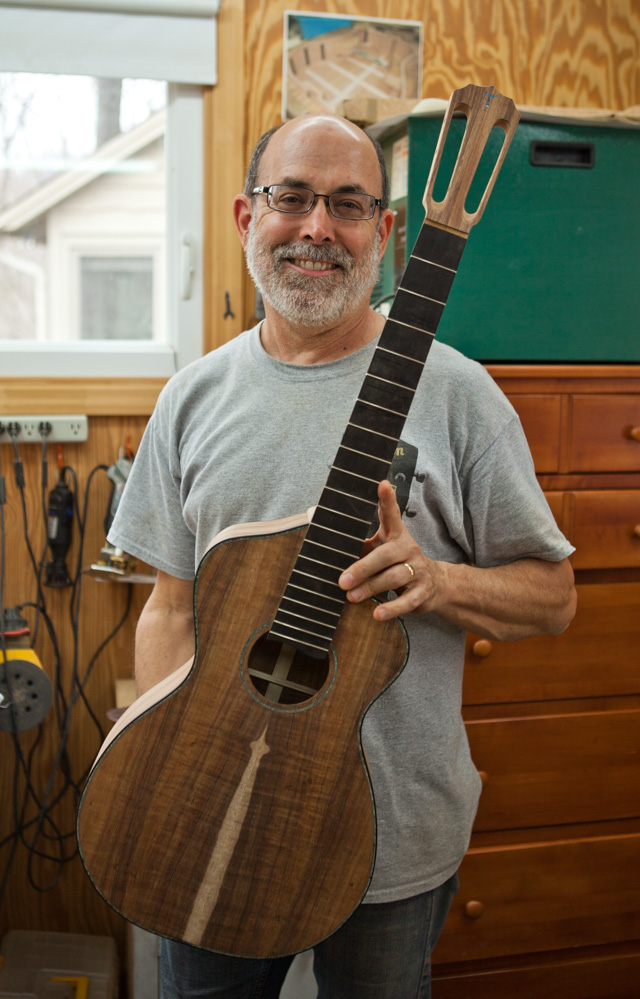
Proud builder of a nearly complete guitar
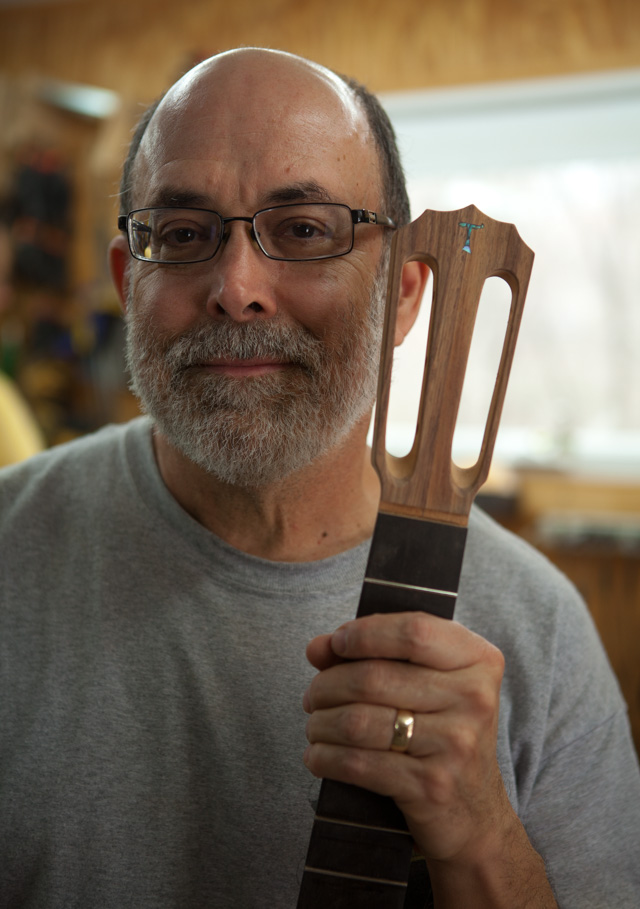
Proud inlay artist

Sanding the neck
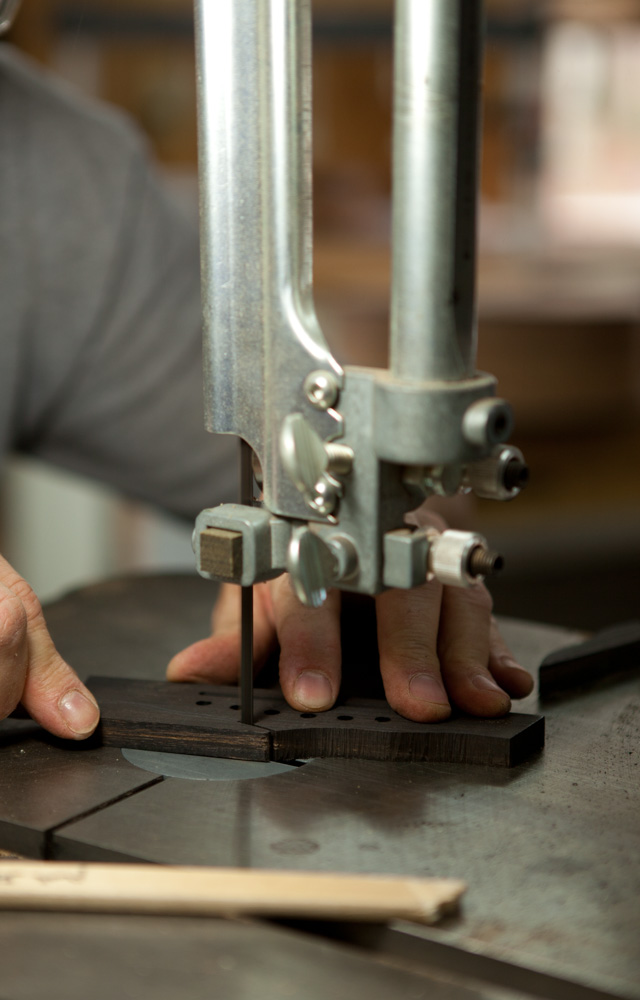
Sawing the bridge to rough shape
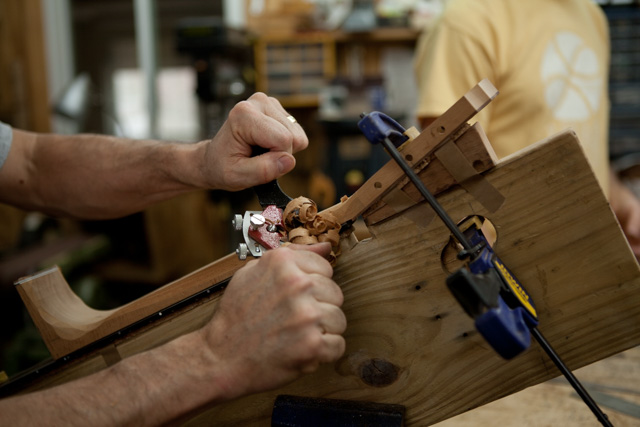
Starting to carve the neck
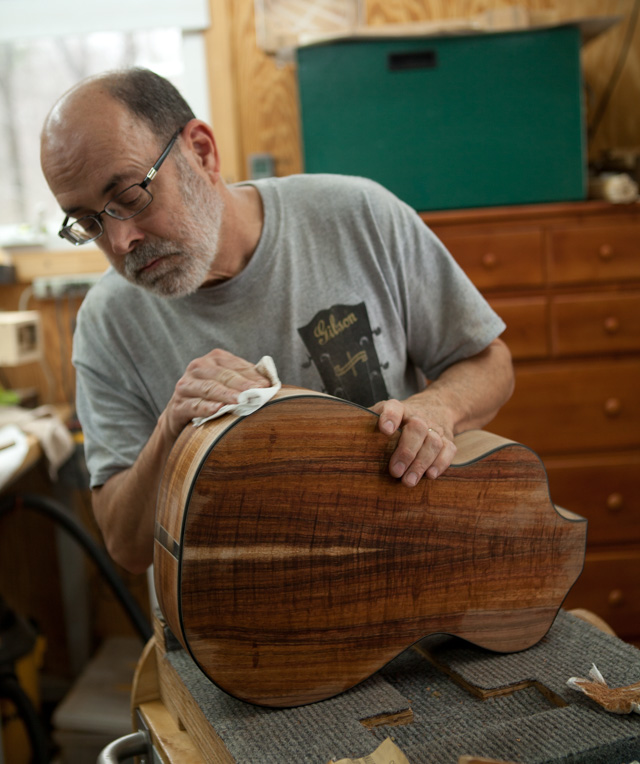
wetting the koa to raise the grain for yet another sanding


